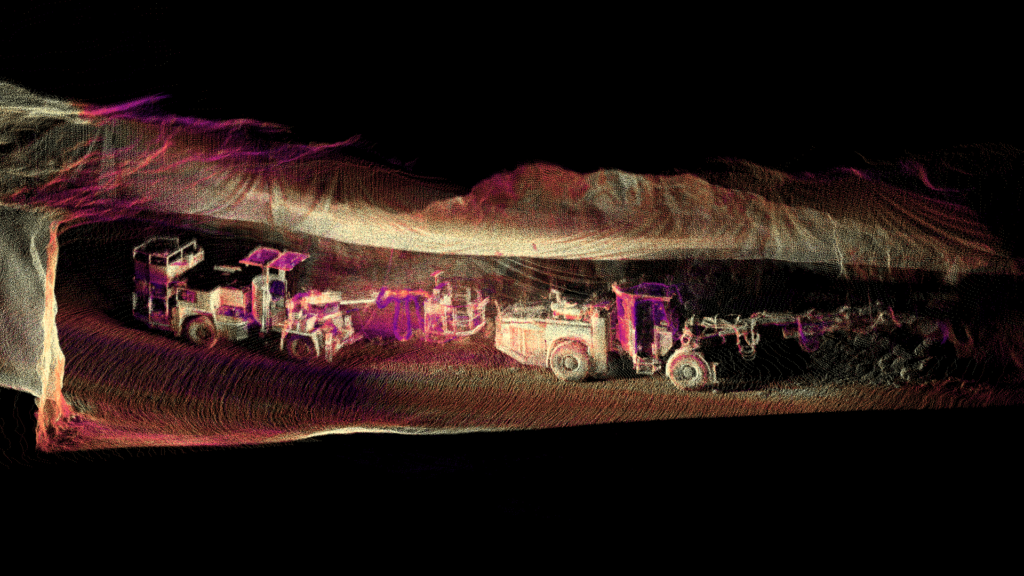On November 7, two LiDAR heavyweights in mining – Ouster and Velodyne – announced a proposed “merger of equals.” Ouster is a leading provider of high-resolution digital LiDAR, counting leading mining equipment OEMs like Sandvik and Liebherr plus Chinese AHS leaders WAYTOUS and TAGE Idriver among its customers. Velodyne is a leading global player in LiDAR sensors and solutions and a long term supplier of LiDAR sensors to Caterpillar for its autonomous trucks.
Angus Pacala, Ouster CEO

“Ouster’s cutting-edge digital LiDAR technology, evidenced by strong unit economics and the performance gains of our new products, complemented by Velodyne’s decades of innovation, high-performance hardware and software solutions, and established global customer footprint, positions the combined company to accelerate the adoption of lidar technology across fast-growing markets with a diverse set of customer needs,” said Ouster CEO Angus Pacala. “Together, we will aim to deliver the performance customers demand while achieving price points low enough to promote mass adoption.”
To get more insight into its LiDAR technology and position in the mining industry – IM recently interviewed Angus Pacala, who will serve as CEO of the new merged company with Velodyne CEO Dr Ted Tewksbury becoming Executive Chairman of the Board. The merger partners aim to realise annualised cost savings of at least $75 million within nine months after closing the proposed merger. The merger transactions are expected to be completed in the first half of 2023.
In the past, the big OEMs would buy off the shelf industrial LiDAR not necessarily designed for mining – are Ouster sensors more mining ready?
AP: Reliability and robustness have always been key when designing our sensors. We build our sensors to endure some of the harshest operating conditions. All of our OS sensors are rated IP68/69K for ingress protection and can operate in temperatures down to -40°C. We recently released the latest version of our OS series, REV7, which was designed for even greater reliability. Upgrades include an increase to their maximum operating temperature, a reduction in their power draw, and doubling their resistance to shock and vibration while maintaining the same small, light-weight, and power-efficient form factor design of previous generations. With approximately 95% automotive-grade components, Ouster’s REV7 sensors are purpose built for production-scale fleets. Given our long standing focus on ruggedising our sensors, many customers utilise them as is. We have several deployments where our sensors are installed out of the box on mining vehicles, but we also have a handful of customers that want to further ruggedise the sensors or at least mount them alongside things like dampers.
Ouster LiDARs on Sandvik AutoMine Concept Loader

How would you say the LiDAR market in mining has evolved in the last few years as the autonomy uptake in mining has increased?
AP: LiDAR is becoming a key component on next-generation mining equipment, as well as a key piece of site infrastructure for increased security, safety, and even volumetric measurement. LiDAR is not just a sensor for R&D programs. It is being deployed on production mining fleets to reduce vehicle collisions and increase efficiency as well as to enable fully autonomous operations. We also work with solution providers that utilise our LiDAR on vehicles or fixed infrastructure to monitor voids in open-pit mines or other hazardous zones and track and alert to objects moving through them, or to analyse the volume of material being loaded or processed at a site. Large OEMs and mining operators have figured out that they can achieve a massive return on investment by deploying this technology, so we are starting to see the pace of adoption quicken across the industry.
Do you have any strategic collaboration or supply agreements in place with the big mining equipment suppliers?
AP: Yes, we have multiple multi-year strategic customer agreements in place to supply large industrial and mining equipment manufacturers as they scale production or adoption of retrofit solutions. We also work with a number of companies using our sensors for R&D purposes. The expectation is that many of these R&D programs will mature to large-scale production deployments, but this can take some time. We’re just at the cusp of the LiDAR adoption curve, so the mid to long-term opportunity for scale is very exciting.
Is there also a market for LIDAR being retrofitted to existing machines by the mines themselves and is this something that is already happening?
AP: Yes, absolutely. Ouster is working both directly with autonomous solutions providers as well as some direct mines on retrofitting the equipment already at the mine sites.
There is a lot of talk about solid state LiDAR with no mechanical parts in mining – what is Ouster’s take on this and how are your LiDAR sensors evolving as technology evolves?
AP: We believe that the end-state for LiDAR will be solid-state digital LiDAR technology, but the technology is still maturing. Many LiDAR companies are still developing mechanical sensors. Ouster is currently developing its Digital Flash (DF) series solid-state LiDAR for automotive series production, which we believe will drive high-volumes and ultimately make the sensors more affordable across industries. Eventually, we plan to offer our DF series LiDAR to any customer that wants it, including mining customers. That said, today there is still growing demand for spinning sensors which can provide up to a 360 degree field-of-view.
Ouster LiDAR on mining truck equipped with WAYTOUS autonomous tech in China
Ouster LIDARs are being used on Sandvik’s latest underground machines including it new concept drills and loaders – can you give some insight into what makes Ouster LIDAR applicable and high performing in underground mining environments?
AP: Ouster offers the highest-resolution sensors on the market in addition to a small form-factor, low power draw, industry-leading reliability, and affordability. All of our mining customers put our sensors through rigorous testing and validation, which is a testament to the quality of our products. Our REV7 sensors are even more robust and deliver double the range along with a 50% increase in precision and accuracy. The richness of our point clouds, even in dusty underground mining environments, make it ideal for automated mining solutions.
Do you see high resolution cameras and radar as competing with LiDAR or just complementing it? Do you see most mines and autonomous equipment suppliers opting to use a multi-sensor approach?
AP: At this point in time, we see the various sensing technologies as complementary. There are benefits to each, and the critical aspect of any autonomous vehicle is sensor redundancy. There should never be a single point of failure. Multiple sensors on a vehicle will provide for the most reliable information to the system. If a water droplet or dust blinds a camera, for instance, the system can rely on the LiDAR data. This is why most autonomous equipment suppliers are using a multi-sensor approach.











